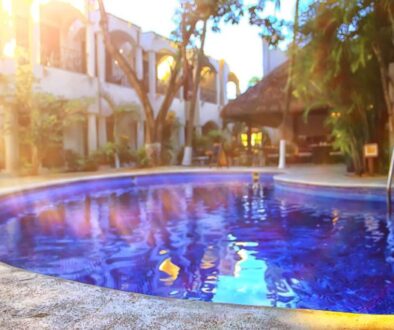Are You Charging Enough for Pool Cleaning?
Understanding the right pricing for pool cleaning services is crucial for profitability. This article delves into factors influencing your charges and strategies to ensure you’re not undervaluing your work.
Are You Charging Enough for Pool Cleaning?
Determining the right price for pool cleaning services can be quite challenging, especially in a competitive market. Many pool cleaning professionals struggle with setting their rates, often undercharging for their services, which can lead to financial instability in their business. This blog post will discuss the various factors you should consider when deciding how much to charge for pool cleaning, the importance of understanding your costs, and how to position your services in a way that reflects their true value. We will explore pricing strategies, industry benchmarks, and customer expectations to help you establish a pricing model that works for you.
Introduction
As a pool service professional, you may find yourself questioning whether you’re charging enough for your cleaning services. This dilemma is common among many in the pool maintenance industry, where competition is fierce and client expectations are high. The right pricing not only ensures that you cover your costs and generate a profit but also positions your business as a quality service provider. In this post, we will explore several key aspects to consider regarding your pricing strategy, including labor costs, overhead, market trends, and customer perceptions.
Understanding Your Costs
To accurately price your pool cleaning services, you first need to have a comprehensive understanding of your costs. Your pricing strategy should cover both direct and indirect costs.
- Direct Costs: This includes the costs of cleaning supplies, chemicals, and equipment maintenance. For example, if you use chlorine, algaecides, or specialized cleaning tools, you must calculate these expenses to determine your cost per job. Keeping track of these expenses helps in maintaining accurate financial records.
- Labor Costs: The next critical component is your labor costs. If you’re a one-person operation, consider how much you want to pay yourself per hour. If you have employees, you need to include their wages, taxes, and any benefits. For instance, if you charge $50 per hour but pay yourself $20, you need to ensure that the remaining $30 covers overhead and profit.
- Overhead Costs: Don’t forget about overhead costs, which can include vehicle expenses, insurance, licensing, and marketing. These can add up quickly, so it’s essential to factor them into your pricing. For example, if you spend $300 per month on vehicle maintenance, that’s roughly $10 per day that should be included in your pricing.
Understanding these costs will help you set a baseline for your pricing and ensure that you are not operating at a loss. Knowing your costs also empowers you to explain your pricing to clients who may question your rates.
Researching Market Rates
Another essential step in determining your pricing is researching market rates in your area. Understanding what competitors are charging can help you position your services more effectively.
- Local Competitors: Look at other pool cleaning services in your locality. What are their rates? How do their services compare to yours in terms of quality and scope? For instance, if your competitors charge between $75 and $150 per pool depending on size and service level, it may be wise to align your pricing within that range while justifying any differences with superior service or unique offerings.
- Seasonal Trends: Pool cleaning prices can fluctuate depending on the season. For instance, demand typically increases during the summer months, allowing for potentially higher rates. In contrast, winter may require discounts or promotional pricing to attract customers. Understanding these trends will enable you to optimize your pricing throughout the year.
- Value Proposition: Consider what makes your services unique. If you provide exceptional customer service, use high-quality products, or offer additional services like pool maintenance and repairs, you might justify charging a premium compared to competitors who only provide basic cleaning services.
By thoroughly researching market rates, you can set competitive prices that reflect your services’ value while ensuring profitability.
Communicating Value to Customers
Once you’ve established your pricing, the next challenge is to communicate this value to your customers effectively.
- Quality Over Price: Remind customers that the lowest price does not always equate to the best service. Highlight the benefits of your services, such as your expertise, safety protocols, and reliability. For example, if you have a unique cleaning method that results in a sparkling pool every time, make sure to emphasize that in your marketing materials.
- Testimonials and Reviews: Utilize positive customer testimonials to reinforce your quality. When potential clients see that others have had a great experience with your service, they’re more likely to view your pricing as justified. Share success stories on your website or social media to showcase how you’ve helped existing customers maintain their pools.
- Transparent Pricing Structure: Ensure that your pricing structure is transparent and easy to understand. Customers are more likely to trust businesses that explain their pricing clearly without hidden fees. Create a detailed service menu outlining what’s included at each price point. This clarity builds trust and enables customers to see the value in choosing you over cheaper alternatives.
Communicating your value effectively can make a significant difference in customer perceptions and willingness to pay your rates.
Adapting to Customer Needs
Understanding your customer base is key to tailoring your pricing strategy. Not every customer will have the same needs or budget, so it’s important to be flexible.
- Customized Service Packages: Consider offering different service packages at various price points. This allows customers to choose a plan that fits their needs and budget. For example, you could offer a basic cleaning package, a full-service package, and a premium package that includes additional maintenance services. This diversity can attract a broader range of customers.
- Flexibility and Discounts: Offering discounts for long-term contracts or referrals can encourage customer loyalty and increase your overall revenue. For instance, if a customer signs a six-month contract for weekly cleaning, you might provide a slight discount, making it more appealing for them to commit while ensuring you have consistent work.
- Listening to Feedback: Regularly seek feedback from your customers about your pricing and services. This can provide insights into how they perceive value and allow you to adjust your offerings accordingly. If multiple customers express concerns about pricing, consider whether you need to adjust your rates or enhance your service to justify them.
By adapting your services to meet customer needs, you build stronger relationships and foster long-term loyalty, which is vital for sustaining your business.
Utilizing Technology for Efficiency
Investing in technology can significantly enhance your operational efficiency, ultimately impacting your pricing strategy.
- Scheduling Software: Using scheduling software can streamline your operations, allowing you to manage multiple customers more effectively. You can optimize your route, minimizing travel time and fuel expenses. For example, if you’re using fleet management software to plan your routes, you might save significant time and money, allowing for some pricing flexibility.
- Customer Management Tools: Implementing customer management tools can help you track client preferences, service history, and billing. This information can be invaluable when communicating value to clients and justifying your pricing.
- Online Payments: Offering online payment options can simplify the billing process for you and your customers. If customers can easily pay with a click, they may be more willing to continue using your services, knowing it’s convenient.
Investing in technology not only increases your efficiency but also enhances the customer experience, allowing you to charge a premium for your superior service.
Balancing Quality and Profitability
Ultimately, you need to strike a balance between maintaining high quality in your services and ensuring that your business remains profitable.
- Regular Reviews: Periodically review your pricing structure and service offerings to ensure they align with your business goals. As your business grows, your costs may change, and adjusting your pricing accordingly is essential.
- Continuous Improvement: Stay informed about industry trends and standards. By continuously improving your services and incorporating customer feedback, you can maintain a competitive edge and justify higher pricing.
- Training and Development: Invest in training for yourself and any employees. This investment not only improves service quality but can also justify a higher price point as you become known for expert knowledge and unparalleled service.
Striking the right balance between quality and profitability will ultimately define your success in the pool cleaning industry.
Conclusion
In conclusion, determining the right price for your pool cleaning services is a multifaceted challenge that requires a deep understanding of your costs, market trends, and customer expectations. By evaluating your expenses, researching local competitors, and clearly communicating your value, you can establish a pricing strategy that reflects your worth in the marketplace. Remember to be flexible and adapt to customer needs while utilizing technology to improve efficiency and enhance your service quality.
As you reassess your pricing strategy, consider exploring available options such as Pool Routes for Sale to expand your business and increase your revenue potential. Contact Tower Business Brokers today to learn more about how we can support your journey to successful pool route ownership.



